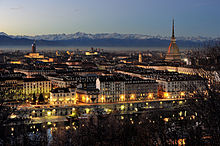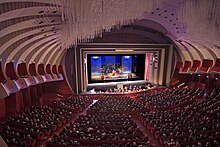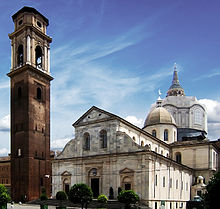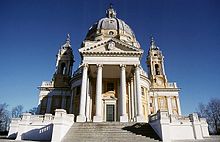Outline of Turin
The city has a rich culture and history, being known for its numerous art galleries, restaurants, churches, palaces, opera houses, piazzas, parks, gardens, theatres, libraries, museums and other venues.
Turin is well known for its Renaissance, Baroque, Rococo, Neo-classical, and Art Nouveau architecture.
Many of Turin's public squares, castles, gardens and elegant palazzi such as the Palazzo Madama, were built between the 16th and 18th centuries.
Even though much of its political significance and importance had been lost by World War II, Turin became a major European crossroad for industry, commerce and trade, and is part of the famous "industrial triangle" along with Milan and Genoa.
Turin is ranked third in Italy, after Milan and Rome, for economic strength.

























